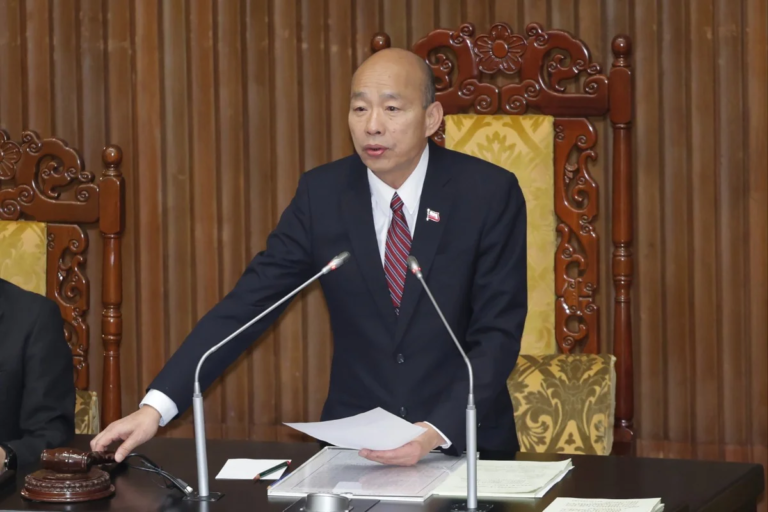
We need to treat disinformation as we deal with insurgencies, preventing the spreaders of lies from entrenching themselves in the host population through capture of infrastructure—in this case, the social media outlets.
Combining targeted action with efforts to build resilience in the population, counterinsurgencies offer valuable lessons for the construction of a longer-term, society-wide plan to combat online disinformation. If we don’t win this campaign, we could suffer severe setbacks in strategic competition and risk the radicalisation of future generations.
Efforts to combat disinformation must focus on the issue’s centre of gravity: social media companies and their ability to hide behind free speech protections to evade responsibility for content on their platforms.
In their book on the future of terrorism, Christopher Wall and the late Walter Laqueur write that ‘terrorism is not an exogenous feature of the modern nation-state but rather a symptom of bad governance.’ This points to the importance of active government roles in preventing emergence of safe havens where digital insurgencies exploit enforcement vacuums.
Our response should focus on shoring up digital governance systems. In many Western countries, such action is underway. The 2022 EU Digital Services Act, for instance, threatens significant fines against social media companies that fail to adhere to European data laws. Australia’s eSafety commissioner, meanwhile, has publicly feuded with X over content moderation decisions.
Ironically, the United States, where many major social media platforms originated, lags behind. The US regulatory conversation increasingly swirls around Section 230 of the Communications Decency Act, a 1990s law that protects social media companies from liability over content on their sites. Bipartisan teams of politicians now routinely collaborate in seeking to end the protections. In my own work, I have called for precisely such a move, which would at least force social media companies to rethink their absolute protection of free speech.
In tandem with efforts to build more sustainable governance structures, counterinsurgencies also kinetically target leaders of insurgent movements and ideologies. In the disinformation counterinsurgency, content moderation replaces military action. This involves takedowns of particularly egregious violators, for example through removal of specific content or even outright access bans for repeat offenders. Such measures are essential in keeping notorious peddlers on the defensive and limit their reach. Many companies, including the behemoths Meta and X, are instead moving in the opposite direction and loosening moderation standards, opening the door for foreign disinformation campaigns.
More heavy-handed efforts to alter the digital battlefield by better policing social media companies and removing individual purveyors of disinformation would, however, fall short without measures to build resilience within the target population—perhaps the defining tenet of counterinsurgency. Such measures, often mockingly described as winning hearts and minds, are essential.
Successful insurgencies—the Viet Cong in Vietnam, for instance, or the more recent Hayat Tahrir al-Sham blitzkrieg in Syria—have survived and eventually triumphed by ingratiating into local communities. They serve as de facto governments in their regions and earn the local population’s trust. Eventually, that population protects the insurgents from prying eyes.
In her commendable Strategist article, my colleague at the Irregular Warfare Initiative, Meg Tapia, blamed ‘the malicious actors and networks creating harmful content’ as the root cause of disinformation, advocating for an organised-crime approach. Tapia’s contention, however, seems to overlook the important role of digital consumers.
Countering disinformation online requires addressing both supply and demand. Not only must counterinsurgents address the prevalence of lies online; they must also consider why untrue or plainly misleading content remains so attractive.
Describing future wars, US army Lieutenant General William B Caldwell reflected that ‘the allegiance, trust and confidence of populations will be the final arbiters of success,’ indicating that governance and content moderation standards might be unsuccessful without deeper efforts to build resilience to disinformation within targeted communities.
Democracies must highlight the virtues of their systems and rally against autocratic and authoritarian movements around the world and give digital denizens the tools to better protect themselves from disinformation. The most sustainable inroads will be made by online users themselves, employing counterinsurgency’s local-forces approach to defend against harmful content. For example, certain states on the frontlines of the disinformation battlefield, such as Lithuania, have created both state-sponsored and civilian-run fact-checking networks to counter disinformation in real time.
Today, state purveyors of disinformation operate in an environment more susceptible to their tactics than at any moment since the end of World War II. In the US, for example, polling has suggested Republicans trust Russian President Vladimir Putin over former US president Joe Biden, and that nearly half of Republicans support a drawdown in NATO support. These results would have been unthinkable at any point in the Cold War. Iran, meanwhile, has freely dispatched pro-Hamas and pro-Hezbollah narratives onto US college campuses.
Such infiltrations by our adversaries pose significant risks to both strategic competition and the digital health of future generations. Only a whole-of-society counterinsurgency approach will mount an adequate response.





